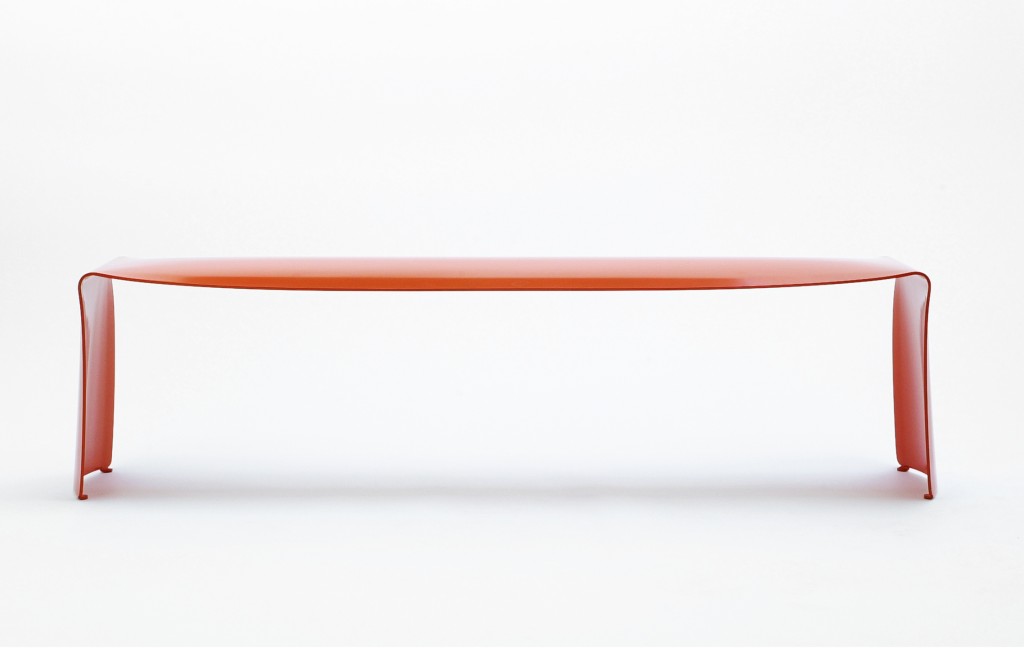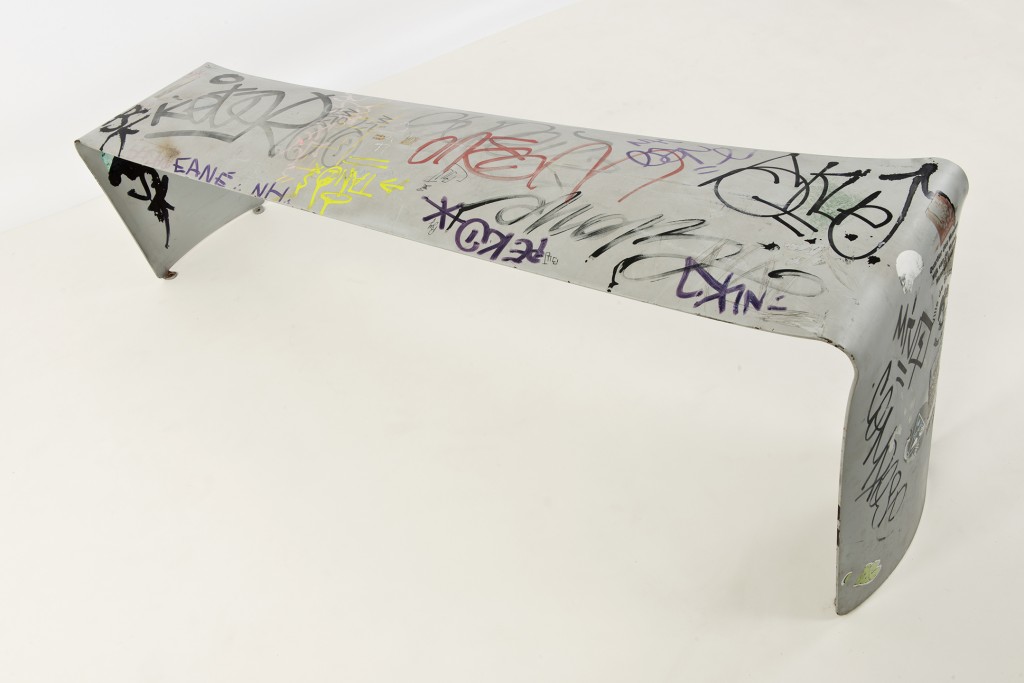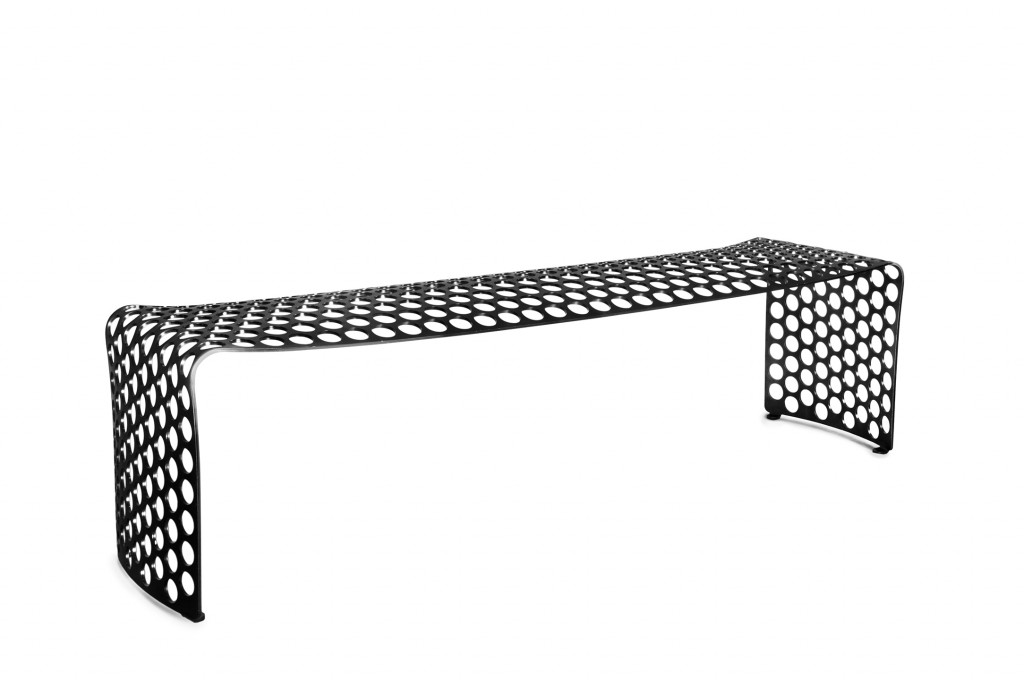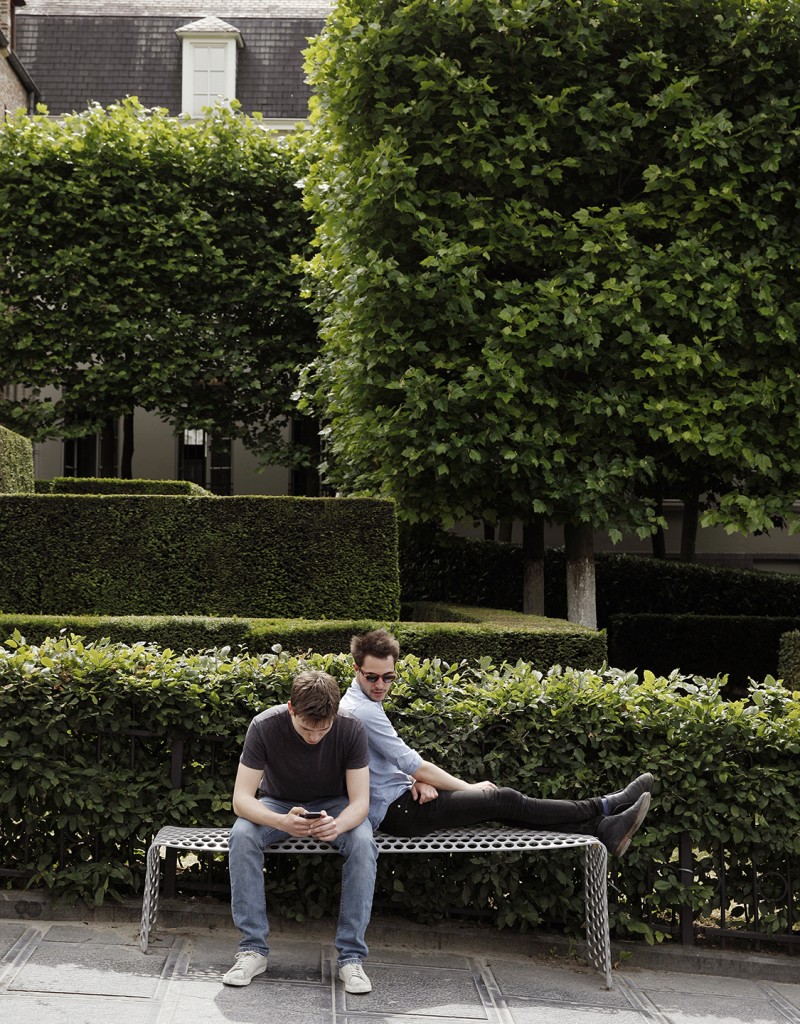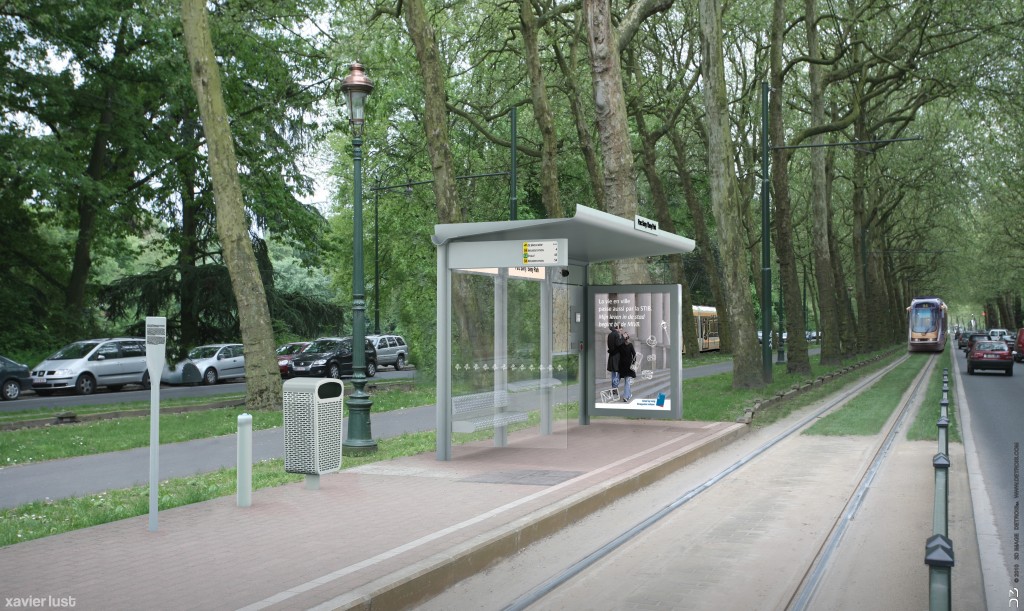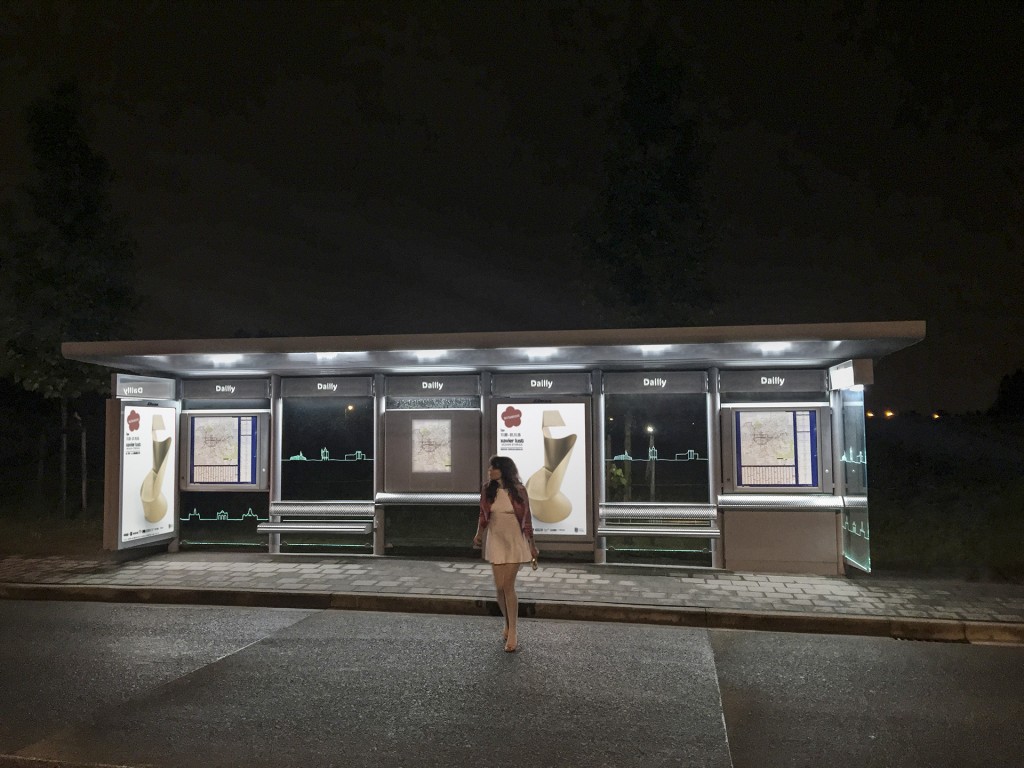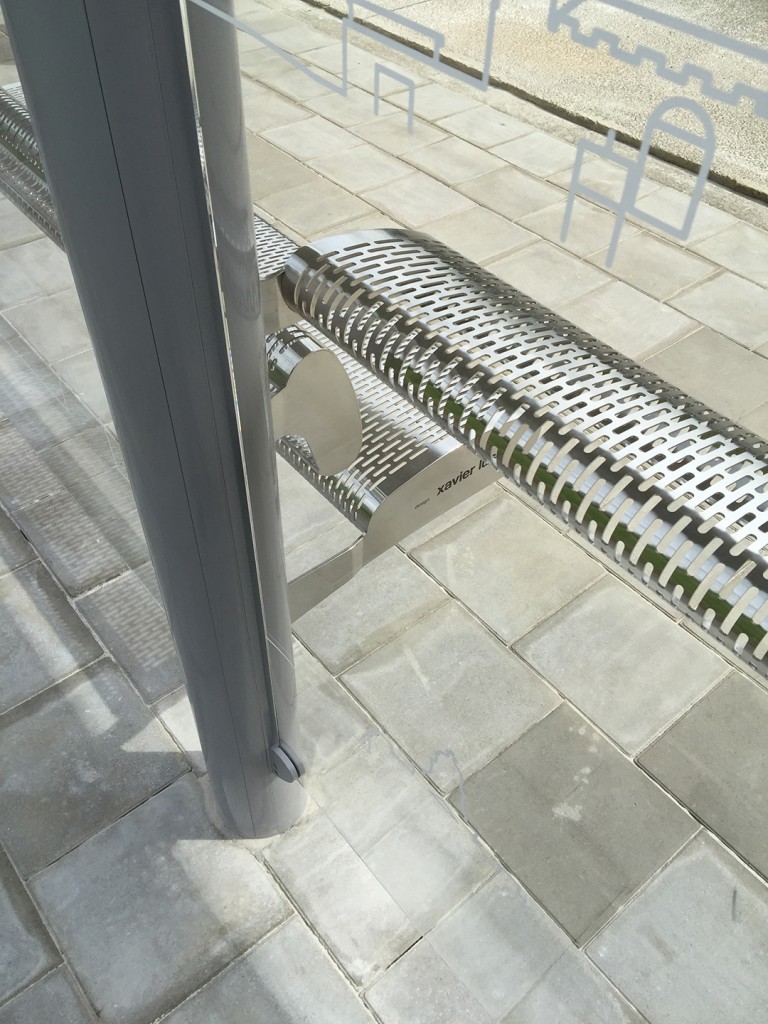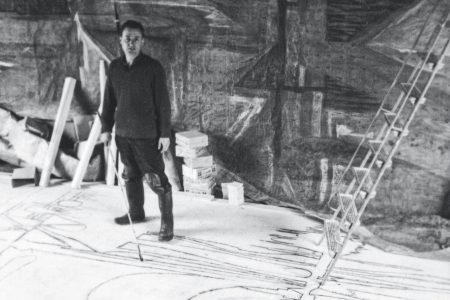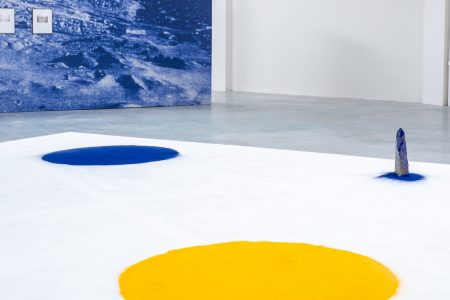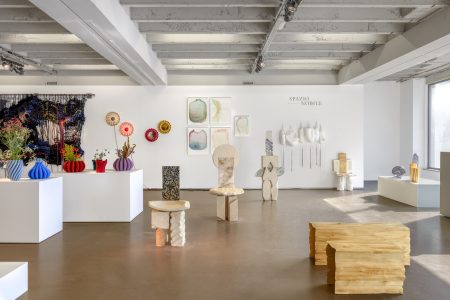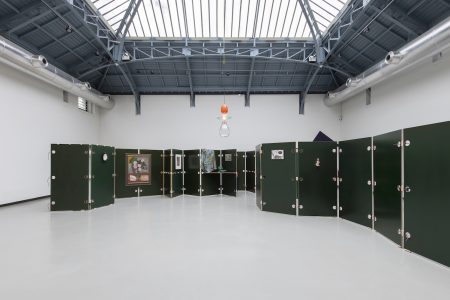Xavier Lust: Evolution of a Design
In an interview, designer Xavier Lust talks about the best moments of a design process, and how benches from public space end up being sold at auctions.
Designer Xavier Lust talks about benches from public space ending up being sold at auctions, design of 2.700 bus shelters for the City of Brussels, and the best moments of a design process.
Xavier Lust is a man of many stories. His talk is a continuum of events and occasions leading from one to another. The most often, the tales end up in design galleries and auctions in Paris, Milan or New York. Even his new book is called Design Stories.
An exhibition bearing the same name at Botanique in Brussels is a celebration of what Lust is known for: high-end design products, limited editions and one-off pieces shown in galleries and sold at auctions; organic shapes, smooth surfaces and metalwork techniques polished to perfection. Even if there is humbleness in negotiating the form between the designer and a challenging material, it is often coated with plush and luxurious finishings, such as fine layers of brushed gold or soft leather covering a piece of furniture not only outside, but also inside.
And not so modest is the designer, either. Loved by high-end design brands, gallerists, auctioneers, collectors and many other clients, he knows the value of the work that goes back to the end of the 1990’s, when he began to develop knowledge of materials and metalwork techniques and produced all of his pieces by himself in his studio in Brussels.
“In the beginning, I understood that you can make so many things out of metal only: heavy, massive things as well as very light and airy ones,” the designer explains. “Curving wood, for instance, takes a lot of time. When a metal bending machine is ready, you just fold the metal and it is done in a few seconds.”
After two years of producing his designs by himself, Lust came to a standstill in 2000, sat down and had an idea of 3D folding metal with the machines he had become familiar with. Out of the revelation was born Le Banc bench for MDF Italia, an inaugural Xavier Lust classic made out of a single sheet of metal, curved and bent to gain the strength the bench needed to function as it is, without further supporting structure. Along came many other future classics for the high-end design market, many of them for Italian design brands.
A Story of a Bench
Even if Lust is known for his beloved high-end design pieces, his designs can also be experienced in public spaces in Brussels. But, even his designs for public spaces have a tendency to rotate back to design galleries in Milan, Paris or New York, and to be sold for collectors in auctions.
The designer’s contribution to public spaces began in 2006, when he was asked to implement benches to an area in the centre of Brussels. He was given a month for the project due to forthcoming elections. This month resulted to an anti-graffiti varnished version of classic Le Banc bench, only a bit sturdier from the original to stand the test of public use.
Despite the anti-graffiti varnish, the benches were covered in graffiti only a couple of days after implementing the benches onto the streets. The short time given for the project hadn’t allowed testing the anti-graffiti varnish, which proved not to be working as expected.
Along came new test versions of the bench to fight the tags. For one of prototypes, Lust perforated the metal sheet to reduce surface for graffiti with a result of a net-like, semi-transparent sheet that also reduces heat and cold of the metal surface and further integrates the bench to the city.
Having worked with galleries and auction houses for years, this test version ended up being auctioned in Brussels and bought by a gallerist, who showed it in Paris. The piece caused buzz in the French capital, and soon Lust received a call from Carpenters Workshop Gallery, one of the most renowned antique galleries today.
Out of the call was born a 12-piece limited edition of Gun Metal Bench exhibited in the gallery. This version reminded of the perforated prototype made for public space, but was made of thinner metal sheet and came with gunmetal finish suitable for domestic use. A bit later, some of these pieces were auctioned for 20.000 dollars in New York. Today, the price would even be higher due to rarity of them.
Back in Brussels, the infamous graffiti benches in the city were finally replaced by new, perforated versions in 2012. Lust took back the used, tagged benches, which again turned out to being auctioned in Paris in December 2013.
“The prices weren’t so high in this sale, but a friend of mine saw a big presentation of those benches in a gallery in Los Angeles this summer,” the designer explains.
“The story of the bench is funny, because it is something designed for the street and at the same time, with the graffiti, it is an anonymous expression of the city ending up being the opposite, a high-end limited edition item.”
Design for the City
Maybe less likely to be auctioned in a design auction are bus shelters Xavier Lust designed for the City of Brussels. In an increasing manner, he is also working on sculptures for public spaces in Brussels and in other Belgian cities.
“The public market works very differently from other markets I design for. Every market has its own way to work, and designing for public spaces and everybody to use is the most challenging one. It has such an important impact on everyday life of many people,” he admits.
Originally designed in 2010, the bus shelters are still on a testing phase and waiting to be implemented in the city. Two test versions are already mounted, but not yet available for public use.
“A goal of the bus shelter project was to make a proposal for a better life by respecting use of public transport and providing comfort while waiting. For instance, there is a free wi-fi in every shelter,” the designer states.
Also signs of the shelter come in complete words in both languages of the city, French and Flemish, instead of the usual cutting of the words for bilingual signs. And a lesson learned, the benches of the bus stops are made of perforated metal and are anti-graffiti. The rounded, dynamic shapes of the bus shelters are characteristic to Lust’s signature organic aesthetics stemming from nature and methods of metalwork.
“The first characteristic you can see is the roof, which is a bit like Tintin’s hair, so it’s really Belgian and really for Brussels,” Lust grins. “To me, it is corresponding to the spirit of Brussels.”
The final design is still in process in the crossfire of interest and regulations, but Lust is determined to maintain his vision of the shelters.
“The most fantastic part of designing is when the final piece is very close to the first idea after the whole process that involves opinions of the producer, editor and many others”, he states. “It will take some years to have total implementation of the bus shelters, and even when it starts, it will take years to have all the 2.700 bus shelters implemented. At that moment, I can really feel my city as my city.” •
Xavier Lust: Design Stories • 11 September–1 November 2015 • Botanique / Kruidtuin, Rue Royale / Koningsstraat 236, 1210 Brussels, Belgium.
